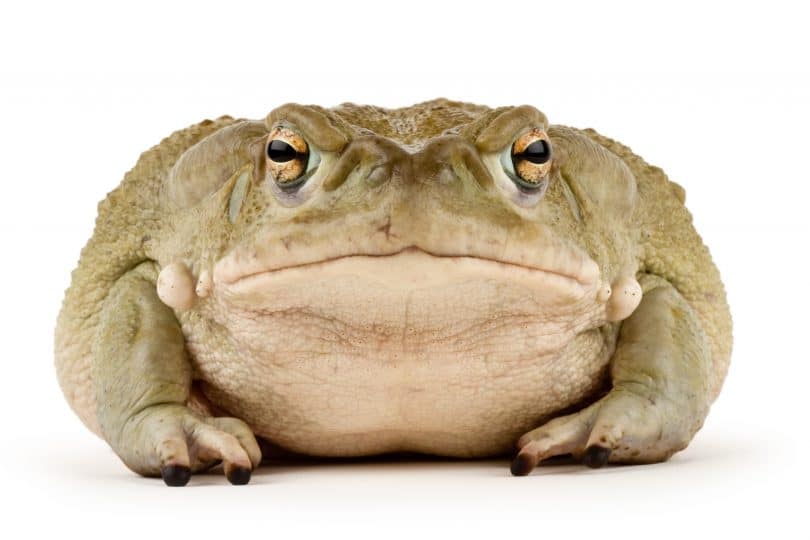Today we’re going to play a bit of a game with our readers. Here are some facts about toad venom. Can you decipher the true story from the false? Can you tell which fact is fiction and which is not?
How much do you really know about the hallucinogenic drug: toad venom. Supposedly the Everest of psychedelic drugs, only true psychonauts have ever been courageous enough to try it. Within this article will be a list of supposed facts based around this kind of DMT and your job is simple. Figure out which one is an absolute lie. Good luck.
What is Toad Venom?
Let’s first just understand what toad venom actually is, and then we can move on to all of the amazing and completely true (or not) facts about it. So, first things first, yes toad venom is the venom of a toad. Technically, it is a poisonous secretion produced by certain species of toads, such as the Colorado River toad, also known as the Sonoran Desert toad. The venom contains a potent psychedelic substance called 5-MeO-DMT. Or, if you want to be even more scientific, you can call it 5-methoxy-N,N-dimethyltryptamine. Try saying that after a bit of toad venom.
The substance sits firmly in the hallucinogenic family – alongside the likes of psilocybin, LSD and ayahuasca. It can induce intense and sometimes overwhelming hallucinations and altered states of consciousness when consumed. In some cultures, toad venom has been used for its psychoactive effects in spiritual or religious ceremonies, or for its purported medicinal properties. Recently this substance has become more mainstream – especially with Michael Pollen, psychedelic expert, documenting his experiences with it in his book: How to Change Your Mind: The New Science of Psychedelics. He writes:
“rushing back through 14 billion years, I watched the dimensions of reality collapse one by one until there was nothing left, not even being… I felt something squeeze out from between my legs, but easily and without struggle or pain. It was a boy, the infant me.”
Michael Pollen made it his mission to truly understand psychedelic drugs and, out of all of them, he considered toad venom to be the most intense. If ayahuasca is a walk in the park, then toad venom is a walk to the top of Mount Everest. I was actually offered it once in Goa, but turned it down. Maybe I made the wrong decision, who knows?
True or False

So, without further ado, let’s see how much you think you know about toad venom. Happy April Fools’ Day everyone. Let’s see if you’re the fool or we are. Remember, one of these is a lie, the rest are true. But which one is it?
Fact: You can lick the toad venom directly off the toad’s back
When the Colorado River toad feels nervous or threatened, it can secrete this milky-like substance onto its back. This is a defence mechanism. It is this substance that contains 5-MeO-DMT. Essentially, this is the poison that the toad releases to kill any predators. However, given our rather large and strong constitution, it seems to just get humans pretty high. Whilst there are different ways of consuming toad venom, one of the first was simply licking it off the toad’s back.
Now, that’s not to say that you can go and lick any toad and expect to get high. Not only is that cruel, it’s also just not sensical. It’s only this specific kind of toad that will actually cause any effects. Even then, it would be very dangerous to do it, as you have no idea the dose you might be taking. The toxins can technically kill a grown dog. Ingesting toad venom can produce more intense and longer-lasting effects than other methods, but it is also riskier and should only be done under the guidance of a trained practitioner. What do you think about all of this? True or false?
Fact: William Shakespeare used toad venom to inspire his writing
In the English Elizabethan era – the mid 1500s to the beginning of the 1600s – new drugs and substances were entering the country constantly. This was due to Britain’s historically questionable imperial power at the time. The likes of cannabis, tobacco, caffeine and more serious substances were becoming increasingly available. William Shakespeare, perhaps the greatest playwright to have ever lived, was flourishing at this time. And, it was said that he used certain substances to inspire him.
How else could a man write 37 hit plays all in one lifetime? He definitely needed something to give him a little boost. Well, apparently that boost came from toad venom. It is believed that a powder form of the venom was readily available and he would smoke it in his pipe as he wrote. Supposedly he used it especially with the Tempest, which was one of the more imaginative plays he wrote. Here’s a very famous line from the Tempest:
“Our revels now are ended. These our actors,
As I foretold you, were all spirits and
Are melted into air, into thin air;
And, like the baseless fabric of this vision,
The cloud-capp’d towers, the gorgeous palaces,
The solemn temples, the great globe itself,
Yea, all which it inherit, shall dissolve,
And, like this insubstantial pageant faded,
Leave not a rack behind. We are such stuff
As dreams are made on: and our little life
Is rounded with a sleep.”
Does this not sound a little like Michael Pollen’s description of toad venom? What do you think? True or false?
Thank you for stopping in. Head over to the Cannadelics Weekly Newsletter for direct updates; and get access to awesome deals on cannabis buds, vapes, edibles, smoking devices and equipment, cannabinoid compounds, and some psychedelic products! Go get high responsibly!
Fact: Toad venom was first used thousands of years ago
The use of toad venom can be traced back thousands of years to various indigenous cultures around the world. In ancient Egypt, for example, toad venom was used as a remedy for a range of ailments, including headaches and epilepsy. In ancient Greece, toad venom was believed to have magical and mystical properties and was used in religious rituals.
The use of toad venom also has a long history in traditional Chinese medicine. In Chinese folklore, the toad is believed to have medicinal properties and is associated with longevity and good health. Toad venom, which is known as ‘Chansu’ in Chinese, has been used in traditional Chinese medicine for centuries to treat a variety of conditions, including heart disease, cancer, and pain. Now, In modern times, the use of toad venom as a recreational drug gained popularity in the 1960s and 70s, particularly in the United States.
The psychoactive properties of bufotenin, a compound found in toad venom, were discovered and became popular among counterculture groups. Nowadays people pay shamans hundreds of pounds to trip-sit them through an experience with the venom. Even Mike Tyson has claimed that the substance saved him from his crippling depression. Not many people who consume it now, truly understand the lustrous history that toad venom has. But what do you think? True or false?
What Do You Think?
Having read all three of these supposed facts, and analyzing them thoroughly, which do you think is the lie amongst the truths? Which one stands out to you? Make sure to comment below and let’s see if you are right. Did Shakespeare take the drug? Can you lick it directly off the toad’s back? Does it really have such a long history? You decide.

Conclusion
Since Michael Pollen labelled toad venom the ‘Everest’ of psychedelic drugs, it’s been all the rage. However, like ayahuasca, it seems that only some people have actually tried it themselves. It’s a journey of a lifetime, and only some want to actually experience that.
It is a complex substance that contains a variety of compounds with both potentially beneficial and dangerous effects. Nonetheless, for those that have used it (maybe even William Shakespeare), many have claimed it has changed their life. Anyway, enough of that. It’s time for you to decide which was the fib. Let us know in the comment section below.
Thanks for making your way over! We appreciate you stopping in at Cannadelics.com; where we work to bring you the best in independent news coverage for the cannabis and psychedelics spaces. Visit us regularly for daily news, and sign up to the Cannadelics Weekly Newsletter, so you’re always on top of what’s going on.









